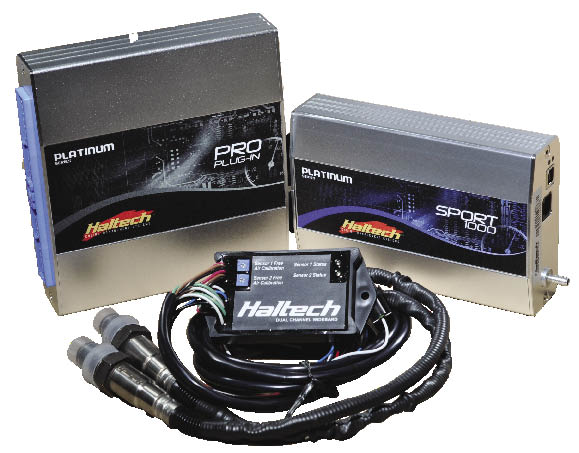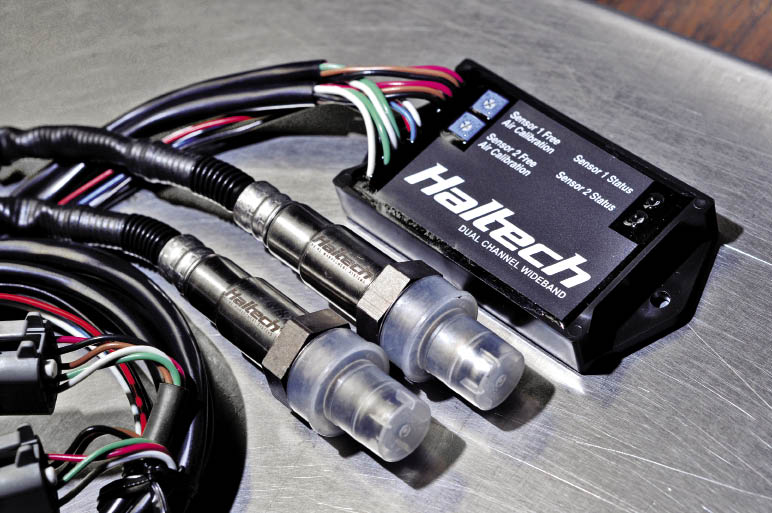Long behind us are the days where carburetors meter fuel and spray it into your engine with little to no computer input. As you know, you now have a computer that controls your fuel injectors and ignition system (among many other things). This ECU (engine control unit) takes information from sensors and figures out just how much fuel to inject and how much to advance or retard the ignition. As the years have gone by, OE manufacturers have added more sensors, each one making a tuner’s job of messing with the OEM ECU a little bit more difficult. Now we’re at the point where modern ECUs essentially have minds of their own, and can take over your engine and eat your babies.
 Aftermarket “piggyback” devices used to work great, as you could predict what a simple factory ECU would do under most circumstances thus enabling you to feed it some crooked information to get the system to do what you want (compensate fueling for larger injectors, for example). There are a ton of these piggyback computers on the market, and I’ve used a few of them. Many of them actually work great – on older ECUs. Once we get into the baby eating species, with so many sensors each feeding back data for the computer to consider, our piggyback units no longer work so well. There are just way too many variables and more often than not, the piggyback system causes a strange issue to arise, or large, potentially dangerous variations in the tune from day to day as the weather changes.
Aftermarket “piggyback” devices used to work great, as you could predict what a simple factory ECU would do under most circumstances thus enabling you to feed it some crooked information to get the system to do what you want (compensate fueling for larger injectors, for example). There are a ton of these piggyback computers on the market, and I’ve used a few of them. Many of them actually work great – on older ECUs. Once we get into the baby eating species, with so many sensors each feeding back data for the computer to consider, our piggyback units no longer work so well. There are just way too many variables and more often than not, the piggyback system causes a strange issue to arise, or large, potentially dangerous variations in the tune from day to day as the weather changes.
So what does that mean for the guys that want to put a larger turbo on a Genesis Coupe? Or supercharge a 350Z? Or build a wild high compression K20? Well, we have two options. The first is to reflash the factory ECU, reprogram the targets the it aims for (add fuel, change ignition timing, give it a different injector size, change boost targets etc). With reflashing you’re no longer tricking the factory ECU with a piggyback unit- you’re actually ordering the changes you want made, and it doesn’t argue. Since you’ve hacked in, the computer no longer wants to eat your babies, but instead have babies with you. Since  that’s what you told it to want. Reflashing the ECU is only possible with some vehicles depending on whether or not a company has hacked the factory computer and figured out how to reprogram it. The problem with reflashing is that you’re often confined to the factory sensors, and if you max them out, you’re stuck.
that’s what you told it to want. Reflashing the ECU is only possible with some vehicles depending on whether or not a company has hacked the factory computer and figured out how to reprogram it. The problem with reflashing is that you’re often confined to the factory sensors, and if you max them out, you’re stuck.
The second option is to run a standalone ECU. A standalone you say? Yes, a standalone. Doesn’t it sound all manly and strong? A standalone. All by itself. Taking care of everything. What defines a standalone ECU is a separate, aftermarket computer that takes over full control of the engine where most ECU functions are programmable. The main problem with standalones is that they require a complete modification of the vehicle’s wiring harness to adapt the new computer to the old wiring. New sensors are also often required, which sometimes requires a custom install. Wouldn’t it be nice if there was just a plug and play standalone ECU? Well that’s just what Haltech has done with their Platinum Pro and Platinum Pro Harness series ECUs.
Haltech has been making some of the best standalone ECUs on the market for guys like you and me since I was born in 1986. And like anyone that has been successful in the technology business for that long, they have kept up with the rapid growth and have continually adapted to new challenges and opportunities. Haltech has realized the issues we tuners have with modern engine computers, and have found a way to give us full, safe, and consistent control of the engine, while retaining the factory wiring harness, and integration with the rest of the vehicle’s systems (most new cars will essentially shut down all systems if they detect the main ECU is missing – your power windows may even stop working!). ECU installation literally takes five minutes- some initial setup and viola!, you’re ready to start the engine. Compare that to two plus weeks to build a custom wiring harness, and you can see why we’re excited.
Related Articles
 S30.world Launches "The Masterpieces" - Celebrating Nissan's S30 Platform
S30.world Launches "The Masterpieces" - Celebrating Nissan's S30 Platform
 Chopping Block: Lexus LS
Chopping Block: Lexus LS
 Chopping Block: Audi A7 and S7
Chopping Block: Audi A7 and S7
 2027 Golf R to get 394-hp 5-cylinder turbo?
2027 Golf R to get 394-hp 5-cylinder turbo?
 Nissan rolls out Z Heritage Edition for 2026, confirms manual for Z NISMO
Nissan rolls out Z Heritage Edition for 2026, confirms manual for Z NISMO
 2026 Honda Prelude makes its North American debut
2026 Honda Prelude makes its North American debut





